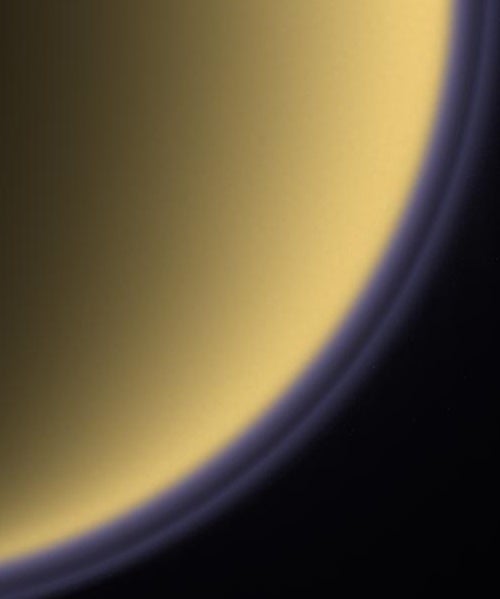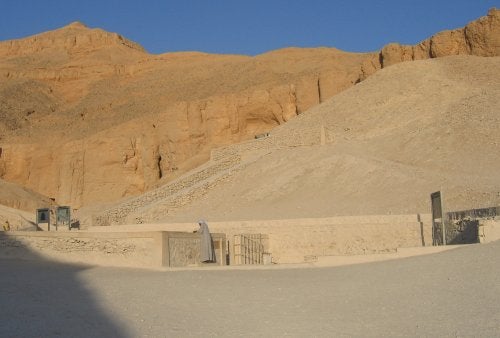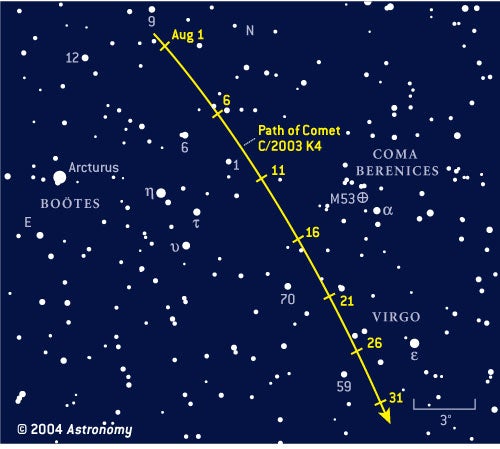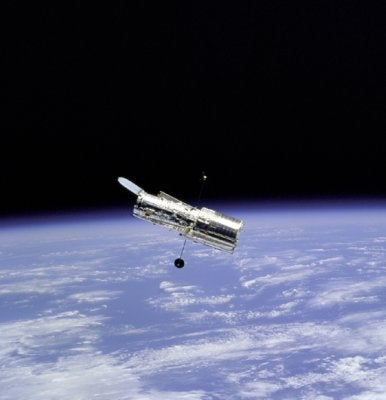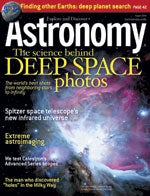
August 2004
The world's best-selling astronomy magazine offers you the most exciting, visually stunning, and timely coverage of the heavens above. Each monthly issue includes expert science reporting, vivid color photography, complete sky coverage, spot-on observing tips, informative telescope reviews, and much more! All this in an easy-to-understand, user-friendly style that's perfect for astronomers at any level.
Features
Mauna Kea’s colorful universe
The Canada-France-Hawaii Telescope atop Mauna Kea produces some of the most stunning astronomical images ever seen. Find out how the images are created, and experience the beauty of these celestial objects for yourself.
Seeking other Earths
More than one hundred extrasolar planets like Jupiter have been discovered, but what everyone really wants to find are “exo-Earths” orbiting other stars. Any day now, say astronomers.
Warm and not so fuzzy
NASA’s fourth and final Great Observatory, the Spitzer Space Telescope, is opening astronomers’ eyes to planets, stars, nebulae, and galaxies by zeroing in on the infrared radiation they emit.
Barnard’s Milky Way
A 1927 atlas and catalog by famed observer Edward Barnard helped astronomers discover that dark patches in the Milky Way are interstellar dust, not “holes in the sky.”
Extreme imaging
Braving the elements and high altitude, a pair of amateur astrophotographers journeyed to the summit of Mauna Kea in pursuit of dark skies and returned with spectacular images.
A League of its own
Since 1941, the Astronomical League has been the spearhead for amateur astronomers in the United States. Take a behind-the-scenes look with the organization’s executive secretary – you might be surprised at the number of areas in which the League is active.
Celestron’s Advanced Series telescopes
The telescopes used by amateur astronomers today are as good as they’ve ever been. Can these telescopes really be made any better? Celestron says yes, and after testing their newest Newtonian and Schmidt-Cassegrain models, so do we.
Departments
This month in Astronomy
Letters
Bob Berman’s strange universe
Glenn Chaple’s observing basics
Interview
News
The sky this month
New products
Book reviews
Coming events
Advertiser index
Resources
Reader gallery

